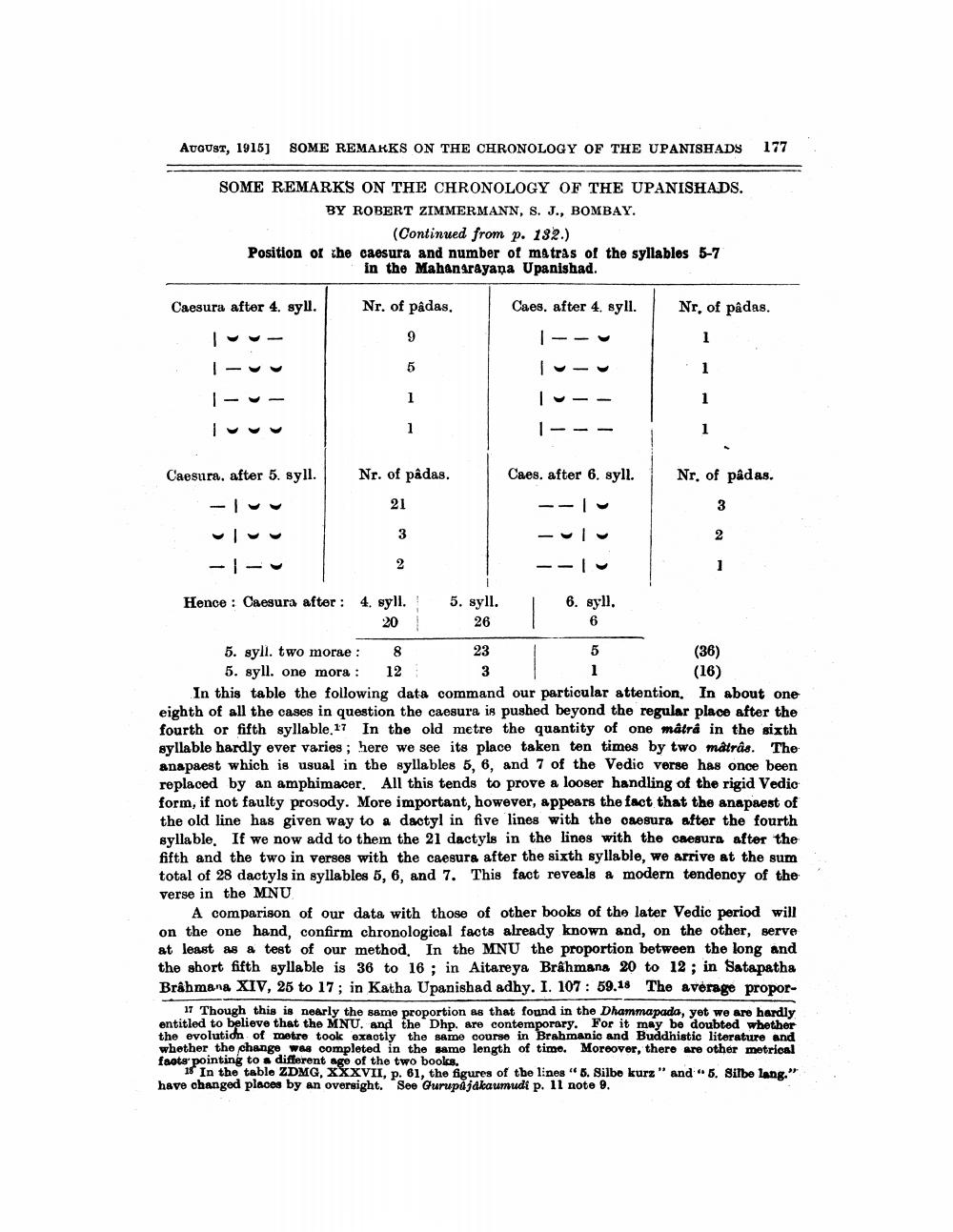________________
AUGUST, 1915) SOME REMARKS ON THE CHRONOLOGY OF THE UPANISHADY
177
SOME REMARKS ON THE CHRONOLOGY OF THE UPANISHADS.
BY ROBERT ZIMMERMANN, S. J., BOMBAY.
(Continued from p. 182.) Position of the caesura and number of matras of the syllables 5-7
in the Mahanarayana Upanishad.
Caesura after 4. syll.
Nr. of pâdas.
Caes, after 4. syll.
Nr, of pâdas.
-
-
1-vu 1-v
-
-
Caesura, after 5. syll.
Nr. of pâdas.
Caes. after 6. syll.
Nr. of pâdas.
-
2
-
-|
Lulu --10
syll.
Hence : Caesura after : 4. syll. 5. syll.
20 26
6 5. syli. two morae : 8 23 1 5
(36) 5. syll. one mora : 12
3 1
(16) In this table the following data command our particular attention. In about one eighth of all the cases in question the caesura is pushed beyond the regular place after the fourth or fifth syllable 17 In the old metre the quantity of one matra in the sixth syllable hardly ever varies; here we see its place taken ten times by two måtrâs. The anapaest which is usual in the syllables 5, 6, and 7 of the Vedio verse has once been replaced by an amphimacer. All this tends to prove a looser handling of the rigid Vedic form, if not faulty prosody. More important, however, appears the fact that the anapaest of the old line has given way to a dactyl in five lines with the caesura after the fourth syllable. If we now add to them the 21 dactyls in the lines with the caesura after the fifth and the two in verses with the caesurs after the sixth syllable, we arrive at the sum total of 28 dactyls in syllables 5, 6, and 7. This fact reveals & modern tendency of the verse in the MNU
A comparison of our data with those of other books of the later Vedic period will on the one hand, confirm chronological facts already known and, on the other, serve at least as a test of our method. In the MNU the proportion between the long and the short fifth syllable is 36 to 16 ; in Aitareya Brâhmans 20 to 12; in Satapatha Brahmana XIV, 25 to 17; in Katha Upanishad adhy. I. 107: 59.18 The average propor
17 Though this is nearly the same proportion as that found in the Dhammapada, yet we are hardly entitled to believe that the MNU. and the Dhp. are contemporary. For it may be doubted whether the evolution of metre took exaotly the same course in Brahmanic and Buddhistic literature and whether the change was completed in the same length of time. Moreover, there are other metrical faots pointing to a different age of the two books.
18 In the table ZDMG, XXXVII, p. 61, the figures of the lines " 6. Silbe kurz" and "5. Silbe lang." have changed places by an oversight. See Gurupå jakaumudi p. 11 note 9.




